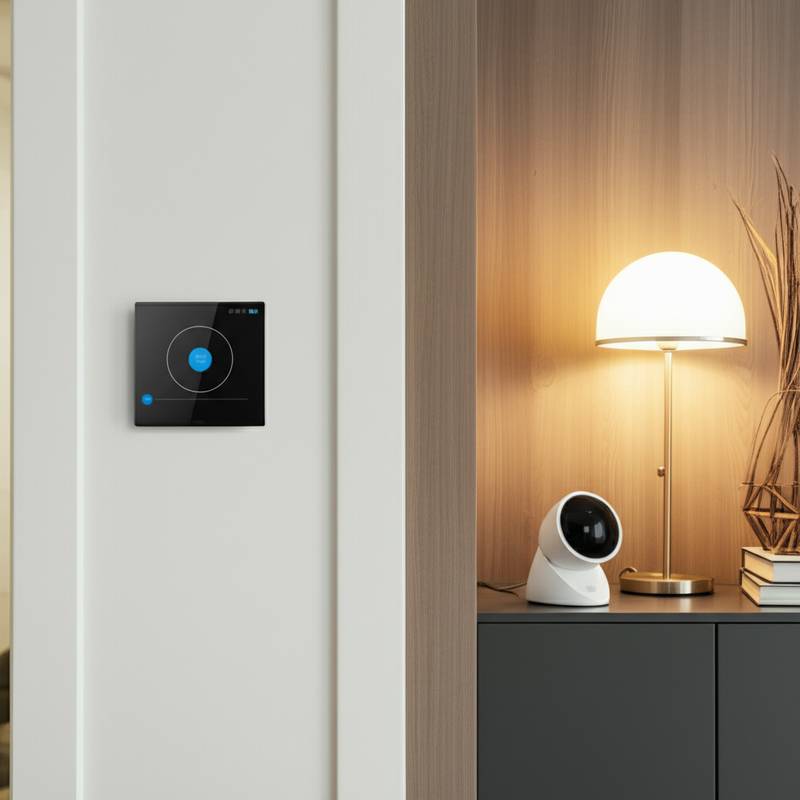Cozy Comfort Without the Splurge
Imagine entering your home on a crisp autumn evening. The outdoor air carries a chill, leaves rustle underfoot, and you seek a warm glow, balanced temperature, and a space attuned to your needs. Smart home upgrades achieve this personalized retreat without requiring a substantial renovation budget.
Homeowners often associate smart technology with high expenses and intricate setups. Recent advancements in wireless connectivity and reduced pricing for entry-level products challenge that view. Begin with modest investments in comfort-focused devices to access benefits comparable to those of high-end systems.
The Smart Approach to a Fall Refresh
Prioritization forms the foundation of cost-effective upgrades. Target elements that enhance comfort in cooler weather, such as lighting, temperature regulation, and energy management. These selections not only simplify daily routines but also promote efficiency to control utility expenses.
Build a cohesive system through incremental additions. Select one category, like illumination, integrate climate controls next, and incorporate accessories such as plugs or monitors afterward. This method distributes expenses and maintains simplicity throughout the process.
Smart Lighting: Affordable Ambience
Lighting influences ambiance more profoundly than any other home feature. During extended fall evenings, appropriate illumination fosters an inviting atmosphere.
- Budget Option: Wyze Bulb Color, priced at $14 per unit. These Wi-Fi-enabled bulbs provide millions of color options and respond to app or voice commands, offering an economical way to alter room moods.
- Mid-Range Choice: Philips Hue White and Color Ambiance Starter Kit, at $99 for three bulbs and a hub. This kit delivers precise color rendering and supports scalable expansion for broader coverage.
- Premium Pick: Nanoleaf Shapes Panels, starting at $179 for the kit. Modular designs serve as both decorative elements and light sources, establishing distinctive room highlights.
Insider Tip: Program lights to follow natural daylight patterns for better sleep. Gradually reduce brightness in the evening to cue relaxation.
Smart Climate and Comfort
Temperature control defines seasonal comfort. Intelligent thermostats or portable heaters remove uncertainty from maintaining warmth while conserving energy.
- Budget Option: Amazon Smart Thermostat, available for $79. This device offers straightforward operation, Alexa integration, and programmable heating routines.
- Mid-Range Choice: Ecobee Smart Thermostat Premium, priced at $249. Features include air quality sensing, multiple remote sensors, and compatibility across Siri, Alexa, and Google Assistant platforms.
- Premium Pick: Nest Learning Thermostat, at $249. Advanced algorithms adapt to user patterns, delivering automatic adjustments and potential energy reductions over time.
Renters or individuals without central systems benefit from the Atomi Smart Ceramic Heater ($79). It delivers targeted heat via app or voice activation, complementing existing setups effectively.
Insider Tip: Position thermostat sensors in primary evening spaces rather than corridors. This setup prioritizes occupied areas for optimal comfort.
Smart Energy and Sustainability
Declining temperatures increase energy demands. Intelligent tools monitor and regulate consumption to preserve comfort affordably.
- Budget Option: Kasa Smart Plug Mini, at $12 each. Schedule or remotely manage devices like heaters and lamps to prevent idle operation.
- Mid-Range Choice: Emporia Smart Plug Energy Monitor, $15 per unit or $45 for a four-pack. Track individual appliance usage to identify high-consumption items.
- Premium Pick: Sense Energy Monitor, priced at $299. This panel-integrated system analyzes household patterns, requiring professional installation for accuracy.
Such tools yield ongoing savings through automation. Scheduled operations eliminate unnecessary runtime, directly impacting utility statements.
Practical Considerations Before You Buy
Preparation maximizes the value of smart home initiatives.
- Budget: Basic setups, including bulbs and plugs, total under $50. Mid-tier configurations with thermostats and lights range from $250 to $400. Advanced options like panels or full monitors surpass $500, providing enduring adaptability.
- Compatibility: Verify alignment with existing platforms such as Alexa, Google Home, or Apple Home. Incompatible selections lead to operational challenges.
- Safety: Engage certified professionals for wired installations, including thermostats or panel connections. Services like HomeAdvisor or Angi facilitate connections to qualified experts.
- Timeline: Wi-Fi-based items install in less than an hour. More involved tasks, such as thermostat or monitor setups, may require a half-day with assistance.
Layering Comfort Across Your Home
Establish core components before incorporating enhancements.
- Smart Curtains: Program closure at dusk to enhance insulation and seclusion.
- Voice-Controlled Scenes: Configure a "Cozy Night" sequence that lowers lights, fine-tunes temperature, and activates preferred audio.
- Air Quality Monitors: With windows sealed against fall air, devices like the Levoit Core 400S ($189) maintain purity through quiet, app-managed filtration.
Integration elevates individual features into a unified experience. Layered additions cultivate a responsive, customized sanctuary.
FAQs
What is the cheapest smart upgrade for fall comfort?
Smart bulbs or plugs provide accessible entry, often under $20, while delivering notable convenience.
Do smart thermostats really save money?
Optimization of schedules and elimination of waste typically yield 10 to 15 percent reductions in heating costs.
Are smart devices safe to leave running?
Established manufacturers incorporate automatic shutoffs and certifications. Select UL-listed items and refrain from pairing small plugs with high-power loads.
Can renters install smart home products?
Yes, options like portable heaters, Wi-Fi bulbs, and plug-ins suit temporary residences and remain portable.
Do I need a smart hub to get started?
Direct Wi-Fi connections suffice for many entry-level devices. Hubs prove essential for expansive networks using protocols like Zigbee or Z-Wave.
Is professional installation required?
Wired applications, such as HVAC-linked thermostats or panel monitors, demand expertise. Simpler upgrades support self-installation.
What is the lifespan of smart bulbs?
LED variants endure 15,000 to 25,000 hours, equating to multiple years under standard conditions.
Will smart devices keep working if the internet goes out?
Hub-based systems, like Philips Hue, operate locally. Pure Wi-Fi models lose remote access but uphold programmed functions.
Implementing Your Upgrades
Affordable smart enhancements transform routines without financial strain. Initiate with devices that enhance immediate comfort, such as adaptive bulbs and efficient heaters. The resulting warmth, automation, and efficiency redefine home as a welcoming haven.
